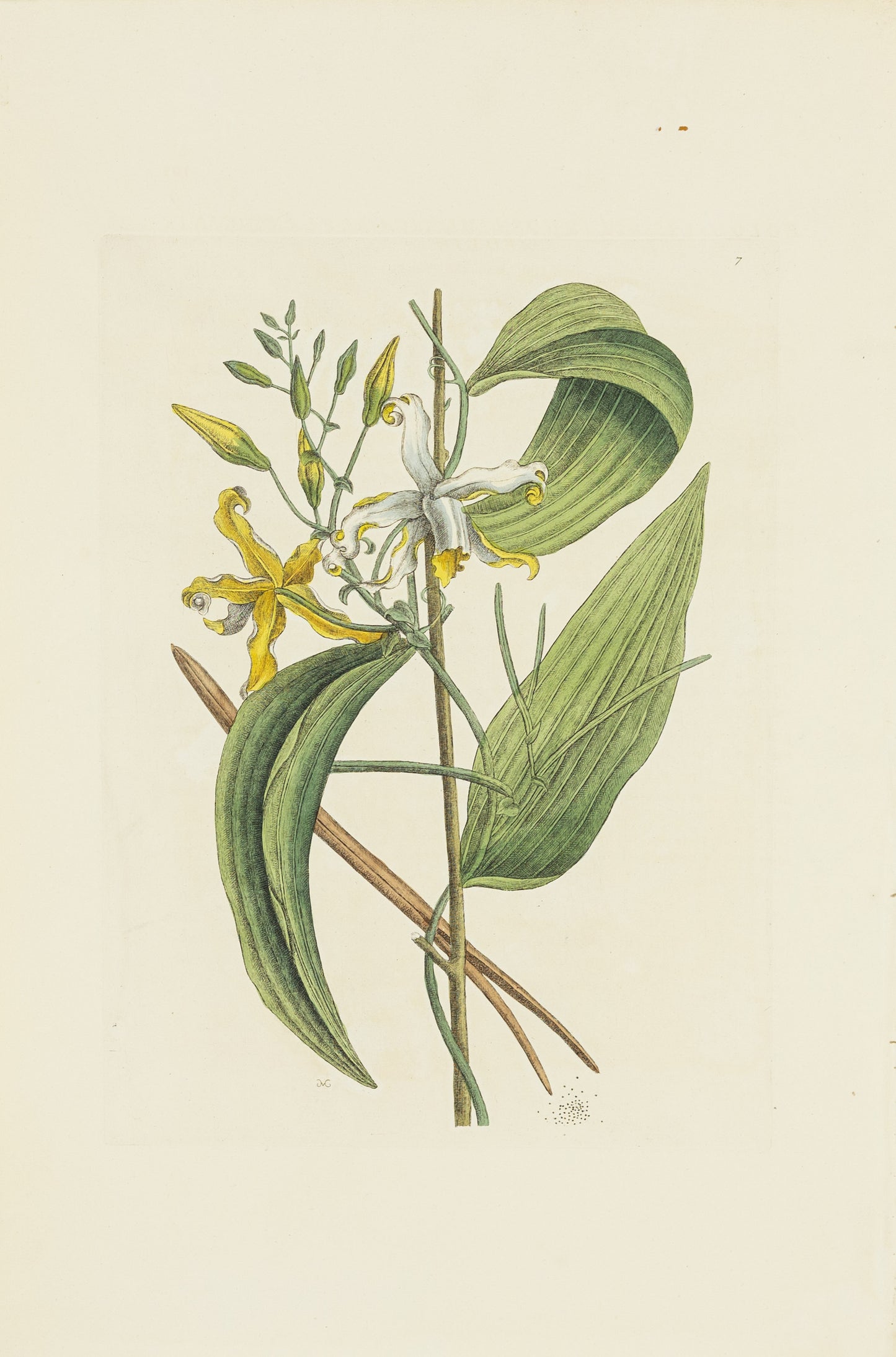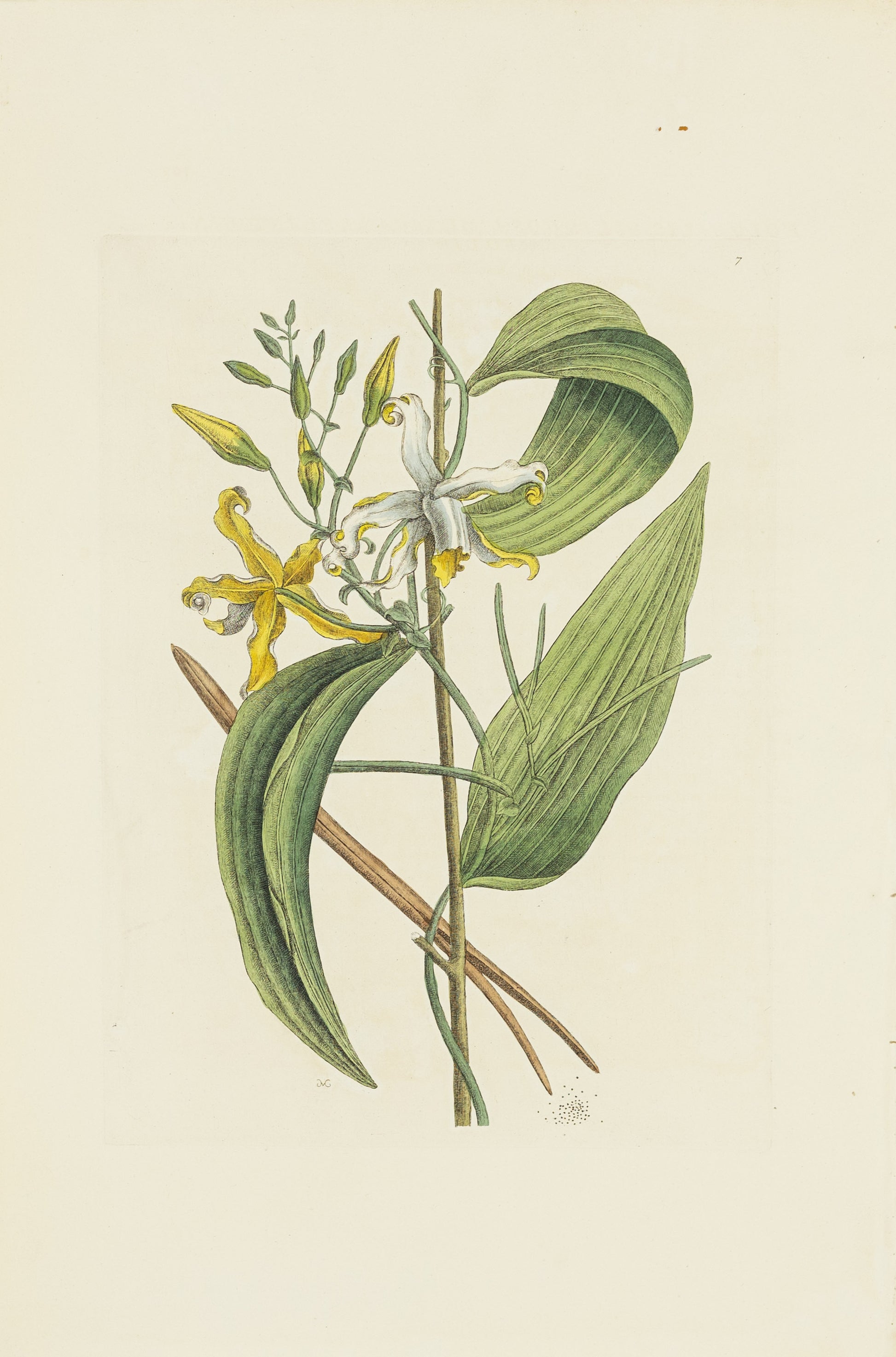Catesby, Mark. Appendix Pl. 7, The Vanelloe
Catesby, Mark. Appendix Pl. 7, The Vanelloe
Couldn't load pickup availability
Mark Catesby (1638 - 1749)
Etching with hand color, paper dimensions: approximately 19 x 14 inches
From the Appendix (Part 11) to Catesby's Natural History of Carolina, Florida & the Bahama Islands
London: 1747 - 1771
Currently known as the Mexican vanilla, Vanilla mexicana*, Catesby described this subjects as follows:
VOLUBILIS SILIQUOSA MEXICANA PLANTAGINI FOLIO.
Hist. Jam. 18o. Vol. I.
The VANELLOE.
This Plant climbeth up the adjacent trees and shrubs by the help of clasping tendrels. The leaves are about eight inches in length, broadest near the foot-stalks, and tapering gradually to a point; and are deeply furrowed longitudinally with seven ribs, the middle rib being most prominent. The flower is composed of five petals, with a cup in the center formed not unlike that of a Foxglove. The backside of the flower is white, the backfide yellow, the middle of the cup has also a dash of brighter yellow. Its feeds are very small, and black, and are contained in a long pod, which when ripe splits open, and discharges
them. With this fruit the Spaniards perfume their chocolate, and employ Indians to cure the pods, which they do by laying them in the fun to dry; then dipping them in an oil drawn from the kernel of the Acajou nut. This perfume is so little agreeable to an English palate, that it is rarely made use of any more in our American Plantations than at home, and therefore not cultivated by us.
They grow naturally in many places between the Tropicks, particularly at Boccatoro, lying in ten degrees north latitude.
*From James L. Reveal’s Identification of the plants and animals illustrated by Mark Catesby for The natural history of Carolina, Florida and the Bahama islands in the appendix of The Curious Mr. Catesby, University of Georgia Press.


